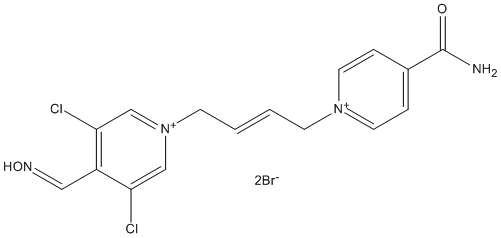K870
General
Type : Oxime, Bispyridinium
Chemical_Nomenclature :
Canonical SMILES : C1=C[N+](=CC=C1C(=O)N)CC=CC[N+]2=CC(=C(C(=C2)Cl)C=NO)Cl
InChI : InChI=1S\/C16H14Cl2N4O2\/c17-14-10-22(11-15(18)13(14)9-20-24)6-2-1-5-21-7-3-12(4-8-21)16(19)23\/h1-4,7-11H,5-6H2,(H-,19,23)\/p+2\/b2-1+
InChIKey : PDCFAKLOGXIFJN-OWOJBTEDSA-P
Other name(s) :
MW : 367.23
Formula : C16H16Cl2N4O2
CAS_number :
CID PubChem :
InChIKey UniChem :
Iuphar :
Wikipedia :

Target
Structure : No structure
Families : No family
References
No reference